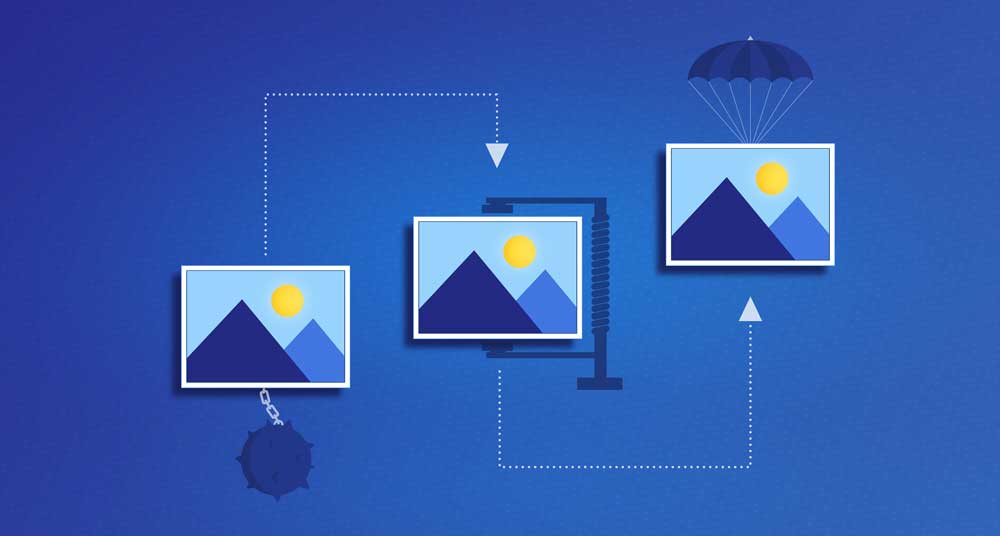Images have an impact on creating an online experience for users. Yet using high-quality images can sometimes result in file sizes causing web pages to load and frustrate users. Optimization is vital to finding the balance between aesthetics and performance. We will delve into some suggestions and techniques that can help you optimize your website’s images effectively. By doing so, you’ll ensure your website loads quickly while still maintaining its appeal.
Why Image Optimization Matters
Before we explore optimization strategies, it’s essential to grasp the importance of image optimization in web development. The value of image optimization can be condensed into the following points;
 Page Load Speed
Page Load Speed
Images can sometimes be the components of a web page. Images that are not optimized can considerably hinder your website’s loading speed, resulting in a user experience and higher bounce rates.
SEO Benefits
Websites that load quickly are highly valued by search engines. When you optimize your images, it enhances the performance of your website, leading to improvements in your search engine rankings.
Bandwidth Consumption
Unoptimized images can use up bandwidth, resulting in hosting expenses for website owners, especially if they have a website that receives a lot of traffic.
Mobile Responsiveness
Given the prevalence of browsing, it’s increasingly crucial to optimize images. Mobile users often face limitations, and images that load slowly can render a website unusable on their devices.
User Experience
A pleasing website has the power to attract and keep users engaged. By optimizing the images, on your site, you can achieve a blend of appeal and quicker loading times, ultimately enhancing the overall user experience.
 Optimizing Images for Web
Optimizing Images for Web
Now that we’ve grasped the significance of optimizing images, let’s delve into pointers and strategies to accomplish this;
Choose the Right Image Format
The first thing you need to do when optimizing images is to choose the image format. JPEG, PNG, and GIF are the used formats for web images.
- JPEG: JPEGs are perfect for capturing photos and images with color transitions. They provide a balance between compression and image quality. You can customize compression depending on your image quality and file size requirements.
- PNG: PNGs are well suited for transparent images and edged graphics, like logos and icons. Although PNGs tend to be larger than JPEGs, they provide lossless compression.
- GIF: This format works well for animations and graphics with a color palette. However, if you’re dealing with photographs, JPEG or PNG is recommended, as they offer quality and flexibility.
Compress Images
Compression plays a role in minimizing the file size while maintaining their quality. Tools and techniques that can be utilized to compress images:
- Online Image Compression Tools
You can use websites like TinyPNG, ImageOptim, and Squoosh to upload images and reduce their file size while maintaining quality. - Plugins and Software
If you use content management systems such as WordPress some plugins can automatically compress images when you upload them. Alternatively, you can also utilize software like Adobe Photoshop, which offers image compression features.
- Lossless vs. Lossy Compression
Lossless compression keeps all the details of an image. It may not lead to substantial reductions in file size. On the contrary lossy compression can significantly decrease the file size; however, there might be a compromise on the quality of the image.
Resize Images Appropriately
Using image files that are larger than necessary can increase the time it takes for your website to load. It’s always an idea to resize your images to match the dimensions needed for your website. If your website has versions for screen sizes (such as responsive design) you might consider using different images that are optimized specifically for each screen.
Leverage Browser Caching
Caching techniques allow you to store images in a user’s browser. This enables faster loading times for repeat visitors, as the images can be retrieved from the cache than downloading them.
Consider Lazy Loading
Lazy loading is a method that involves loading images when they become visible to the user. Adopting this approach effectively reduces the time it takes for a webpage to initially load and conserves bandwidth by loading images as users scroll through the page.
Use Content Delivery Networks (CDNs)
Content delivery networks (CDNs) store duplicates of your images on servers spread across the globe. When users access your website, images are retrieved from the server to their location resulting in loading times and reduced latency.
Optimize Image Metadata
Sometimes the information embedded in an image like EXIF data can make the file size larger than necessary. To make the file size smaller, you can simplify the metadata associated with the image.
Test and Monitor Performance
Check your website’s performance with tools like Google PageSpeed Insights or GTmetrix. Keep an eye on loading times and make necessary tweaks to enhance image optimization if required.
Optimizing Images for Web
Optimizing images for the web is a critical aspect of web development as it directly affects how users experience websites and their overall performance. By choosing the image format compressing images resizing them correctly, and implementing caching and lazy loading techniques, you can achieve a harmonious blend of visual attractiveness and quick-loading web pages. Remember to test and monitor your website’s performance to ensure optimization. Enjoy optimizing your images!
Do You Need Help With Your Website?
Are you looking for help with your website? Reach out to a representative at NEXTFLY to learn more about your options today!
